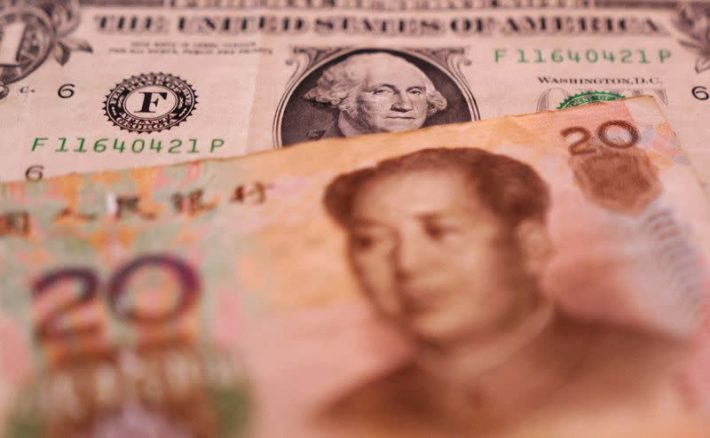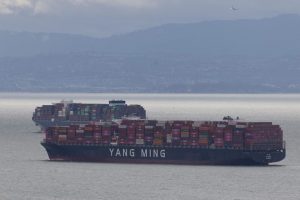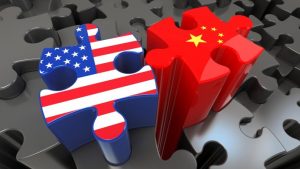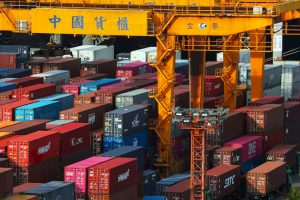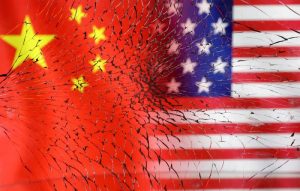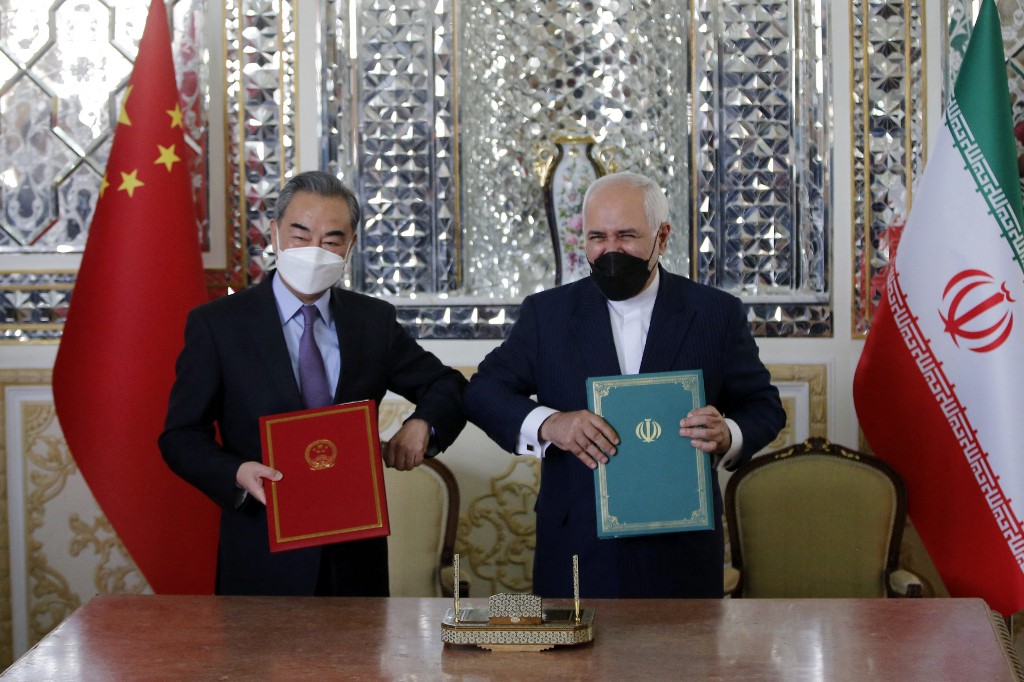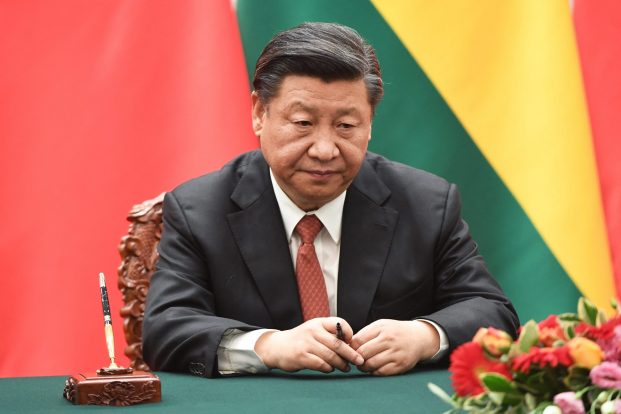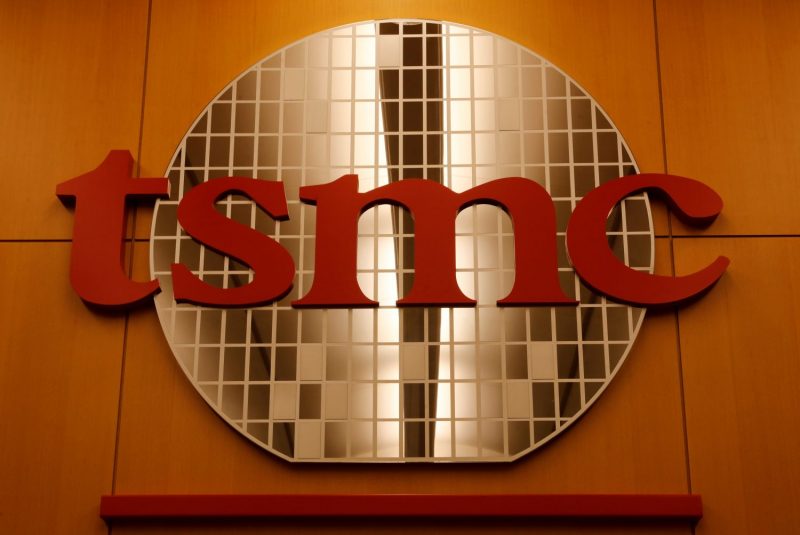The Chinese yuan and US Treasuries have been hit hard by the escalating trade war launched by US President Donald Trump, which has rattled both the currency and bond markets.
China’s yuan sank to its weakest level in more than 17 years on Wednesday after its offshore counterpart fell to a record low overnight.
The onshore yuan finished the domestic trading session at 7.3498 per dollar, its weakest close since December 2007.
ALSO SEE: China Hits Back With 84% Levy, After Trump Doubled US Tariffs
President Trump’s “reciprocal” tariffs on dozens of countries took effect on Wednesday, including massive 104% duties on Chinese goods.
China’s top leaders met on Wednesday to hammer out measures to boost the economy and stabilise capital markets, people with knowledge of the matter said.
Despite the tariff pressure, sources told Reuters that China’s central bank would not allow sharp yuan declines and that it had asked major state-owned banks to reduce US dollar purchases.
Chinese shipments to US seen plunging
“Unless they are rolled back, the latest US tariff hikes mean that China’s shipments to the US will more than halve over the coming years, even assuming the renminbi weakens to 8 to the dollar,” Capital Economics said in a note to clients.
“This will reduce China’s GDP by somewhere between 1.0-1.5% depending on the extent of rerouting (exports through other countries). That’s a larger hit than we had assumed but will probably be met with a further expansion in fiscal support.”
The offshore yuan pared losses and climbed about 0.7% to 7.3769 yuan per dollar in Asian trade, after sinking more than 1% in the previous session and hitting its record low of 7.4288 overnight.
The People’s Bank of China on Wednesday set the midpoint rate – around which the onshore yuan is allowed to trade in a 2% band – at 7.2066 per dollar, the lowest since September 11, 2023.
Based on the fixing level, the yuan is allowed to drop as far as 7.3507, a whisker stronger than the 7.3510 low struck in September 2023.
The fixing was 1,282 pips firmer than a Reuters estimate, suggesting the central bank is reluctant to see a drastic depreciation of the currency.
Chinese state-owned banks were busy selling dollars in the onshore spot market to slow the pace of yuan declines early on Wednesday morning, according to two people familiar with the matter.
Still, both the onshore and offshore yuan have fallen more than 1% so far this month, leaving them weaker since the start of the year, pressured by fears of the tariffs impact.
Trump on Tuesday accused China of manipulating its currency to offset the impact of tariffs.
A weaker yuan would make exports cheaper and alleviate some pressure on China’s trade and the broader economy, but a sharp decline could fuel unwanted capital outflow pressure and risk financial stability, economists said.
Investors dumping Treasuries, bonds
Meanwhile, US Treasuries extended heavy losses on Wednesday in a sign investors are dumping even their safest assets as a global market rout unleashed by US tariffs takes an unnerving turn towards forced selling and a dash for the safety of cash.
“This is beyond fundamentals right now. This is about liquidity,” Jack Chambers, a senior rates strategist at ANZ in Sydney, said.
The 10-year US Treasury yield, the globe’s benchmark safe-haven anchor, was unmoored and long bonds were the focus of intense selling from hedge funds which had borrowed to bet on usually small gaps between cash and futures prices.
It shot higher, crossing 4.5% at one point, even as traders ramped up expectations for US rate cuts and, in another signal of dislocation in markets, the dollar fell against the euro and yen.
Japan’s central bank, finance ministry and banking regulator called an unscheduled meeting for 0700 GMT to discuss the moves, which pulled back some of the extreme selling.
At 4.41% the 10-year yield was up 16 basis points in Asia and more than 50 basis points from Monday’s low.
A three-day rise of nearly 60 basis points in 30-year yields, which spiked above 5%, would mark – if sustained – the heaviest selloff since 1981.
The selloff extended beyond Treasuries to Japan, where the Japanese 30-year government bond yield surged to 21-year highs.
Volatility near crisis levels
“This is up there with GFC and Covid level of volatility,” said Mark Elworthy, Bank of America’s head of fixed income, currency and commodity trading in Australia. “Would expect to have some central bank response in the near-term if markets continue to behave like they have been in the last 12-24 hours.”
Warning signals have been flashing for a few days as spreads between Treasury yields and swap rates in the interbank market collapsed under the weight of bond selling.
Hedge funds were at the heart of it because their lenders could no longer stomach large positions betting on small differences between cash Treasuries and futures prices, or swaps, as markets started to swing on tariff headlines.
“When the prime broker starts tightening the screws in terms of asking for more margins or saying that I can’t lend you more money, then these guys obviously will have to sell,” said Mukesh Dave, chief investment officer at Aravali Asset Management, a global arbitrage fund based in Singapore.
The so-called “basis trades” are typically the domain of macro hedge funds. They rely on selling futures contracts or paying swaps and buying cash Treasuries with borrowed money, with a view to exploiting slight price differences.
As they dumped Treasuries this week, bond yields have soared and fallen out of sync with swaps. At the 10-year tenor, the gap has shot to 64 basis points, the largest on record.
Highest tariffs in a century
On Wednesday, the highest US tariffs in more than a hundred years came into force, roiling global markets, and strategists said a broader debate about the future of Treasuries as the centre of the global financial universe was underway.
“The UST selloff may be signalling a regime shift whereby US Treasuries are no longer the global fixed-income safe haven,” said Ben Wiltshire, G10 rates trading desk strategist at Citi.
Others have pointed to potential changes in global trade flows over the long run slowing foreign buying of US debt or that foreign holders could turn sellers.
“Markets are now concerned that China and other countries could ‘dump’ US Treasuries as a retaliation tool,” said Grace Tam, chief investment adviser at BNP Paribas Wealth Management in Hong Kong.
In any case, the speed of the selloff pointed to pain.
“Yields on super-long bonds have moved up to beyond the level they were at before Trump announced the tariffs, this is like panic selling,” Katsutoshi Inadome, a senior strategist at Sumitomo Mitsui Trust Asset Management in Tokyo, said.
- Reuters with additional editing by Jim Pollard
ALSO SEE:
US And China ‘Stuck in an Expensive Game of Chicken’ – Nomura
Trump Tariffs Could Boost Demand For Renewables: Think Tank
Asian Markets Simmer as China Rejects US Tariffs ‘Blackmail’
Trump Tariff ‘Medicine’ Triggers Asian Markets Bloodbath
China Hits Back With 34% Tariffs on US Goods; SE Asia Reeling
TikTok Still Up And Running in US After Tariffs Thwart Deal




